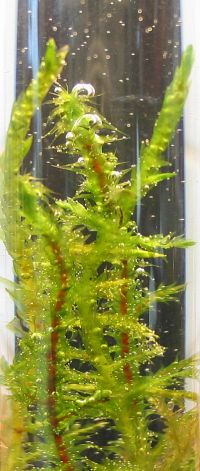Difference between revisions of "Oxygen"
Kee.nethery (talk | contribs) |
|||
| Line 36: | Line 36: | ||
For each bad gas being monitored they have hand held sniffers that detect concentrations to find a leak. Sniffers work just like a geiger counter or metal detector. The sniffer only detects relative concentration, it is not a numerical measurement. Consequently it has a small, medium, or large setting to vary sensitivity. | For each bad gas being monitored they have hand held sniffers that detect concentrations to find a leak. Sniffers work just like a geiger counter or metal detector. The sniffer only detects relative concentration, it is not a numerical measurement. Consequently it has a small, medium, or large setting to vary sensitivity. | ||
| − | ===Oxygen | + | ===Oxygen production=== |
On a submarine they use electrolysis to create oxygen. Two electrodes, positive and negative charged. Pure water is required because, for example, salt water will create chlorine gas which will kill people. On a submarine they use reverse osmosis to filter out the salt. They take pure water and add potassium hydroxide KOH as a catalyst to make the electrolysis go easier. The hydrogen they create is exhausted from the boat. | On a submarine they use electrolysis to create oxygen. Two electrodes, positive and negative charged. Pure water is required because, for example, salt water will create chlorine gas which will kill people. On a submarine they use reverse osmosis to filter out the salt. They take pure water and add potassium hydroxide KOH as a catalyst to make the electrolysis go easier. The hydrogen they create is exhausted from the boat. | ||
Revision as of 09:49, 16 August 2023
| O | 8 |
| Oxygen | |
Abundance: 0.15% atmosphere 46,6% crust
Oxygen (periodic table symbol: O8) is a chemical element that can be found in the atmosphere and in most minerals on Mars. Almost half of the mass of the Martian crust is Oxygen, bound up in various minerals. Oxygen is created in stars from the fusion of Carbon and Helium. Oxygen has 8 protons and the most common isotope is oxygen 16. O17 and O18 exist and are stable. Oxygen needs two electrons to fill its outer electron shell, which makes it a powerful oxidizer. (Only Fluorine is a more powerful oxidizer, but Fluorine is a fairly rare element.)
Contents
Relevance for life
The metabolism of human beings, animals and various microbes depends on oxygen. The atmosphere of Mars contains only 0,15 % oxygen, which is not enough to support animal or human life. If Oxygen is common in Mars' atmosphere, an Ozone layer will build up which will protect the surface from Ultraviolet light.
Production
Oxygen can be produced in situ:
- in greenhouses by plants.
- in photobioreactors by algae.
- by reduction of carbon dioxide from the martian atmosphere, or carbonate minerals via either molten salt reduction[1] or via MOXIE style solid oxide electrolysis.
- by reduction of oxide minerals, either at low temperature in aqueous solution[2] or at high temperature in molten salt[3]. This is required to free up metals from many ores.
- by electrolysis of water
- by the decomposition of perchlorates in the soil.
- by thermal decomposition of water through the Sulfur/Iodine[4] or Zinc/Sulfur/Iodine[5] cycles.
How Submarines produce oxygen[6]
Submarines are a fairly good analog for a Mars habitat, a sealed system that has to manufacture oxygen and remove carbon dioxide.
Monitoring
Submarines monitor the atmosphere in every compartment in the boat (submarine) because each location can have different amounts of humans and activity using oxygen and creating CO2. Air quality monitors will be required for each Mars habitat room. The monitoring for a specific location should be viewable in alternate locations because if things go wrong, people in a good location need to see it to fix it in a bad location.
The gasses they monitor in a submarine (measured in TORR) are: O2, CO2, H2, N2, H2O, pressure (a total of all of these). Other gasses monitored in mTORR are: CO, R114 (refrigerant), TRICH, ALIPHAT, AROMAT, BENZENE, R134A (refrigerant). These are gases used in systems that should not escape into the breathable air. For all these gasses they have calibration samples to confirm the monitors are working correctly.
For each bad gas being monitored they have hand held sniffers that detect concentrations to find a leak. Sniffers work just like a geiger counter or metal detector. The sniffer only detects relative concentration, it is not a numerical measurement. Consequently it has a small, medium, or large setting to vary sensitivity.
Oxygen production
On a submarine they use electrolysis to create oxygen. Two electrodes, positive and negative charged. Pure water is required because, for example, salt water will create chlorine gas which will kill people. On a submarine they use reverse osmosis to filter out the salt. They take pure water and add potassium hydroxide KOH as a catalyst to make the electrolysis go easier. The hydrogen they create is exhausted from the boat.
The backup method for producing oxygen is by burning a Chlorate candle (aka an Oxygen candle). Iron (Fe) and Sodium Chlorate (NaClO3).
Fe + O2 -> Fe2O2 + heat
heat + NaClO3 -> NaCl + O2
Oxygen candles are used on the space station. Fires are classified in various ways. A Class Delta fire (self oxidizing fire), like an oxygen candle, cannot be extinguished, it has to burn out.
Uses
- Propellant. Oxygen is often chosen as an oxidizer for chemical propulsion.
- Atmospheric component. The standard Earth atmosphere contains 21% Oxygen.
- Chemical reagent as an oxidizer.
Related Articles
Oxygenlunarp on Lunarpedia.
- ↑ https://eprints.lib.hokudai.ac.jp/dspace/bitstream/2115/57796/1/CO2OtakeREMTRev2.pdf
- ↑ https://link.springer.com/article/10.1007/s10800-017-1127-5
- ↑ https://link.springer.com/article/10.1007/s10800-017-1143-5
- ↑ https://doi.org/10.1016/j.ijhydene.2006.05.013
- ↑ https://doi.org/10.1016/j.ijhydene.2015.11.049
- ↑ Destin Sandlin (2021). How Do Nuclear Submarines Make Oxygen?- Smarter Every Day 251 [Video]. https://www.youtube.com/watch?v=g3Ud6mHdhlQ; SmarterEveryDay.







